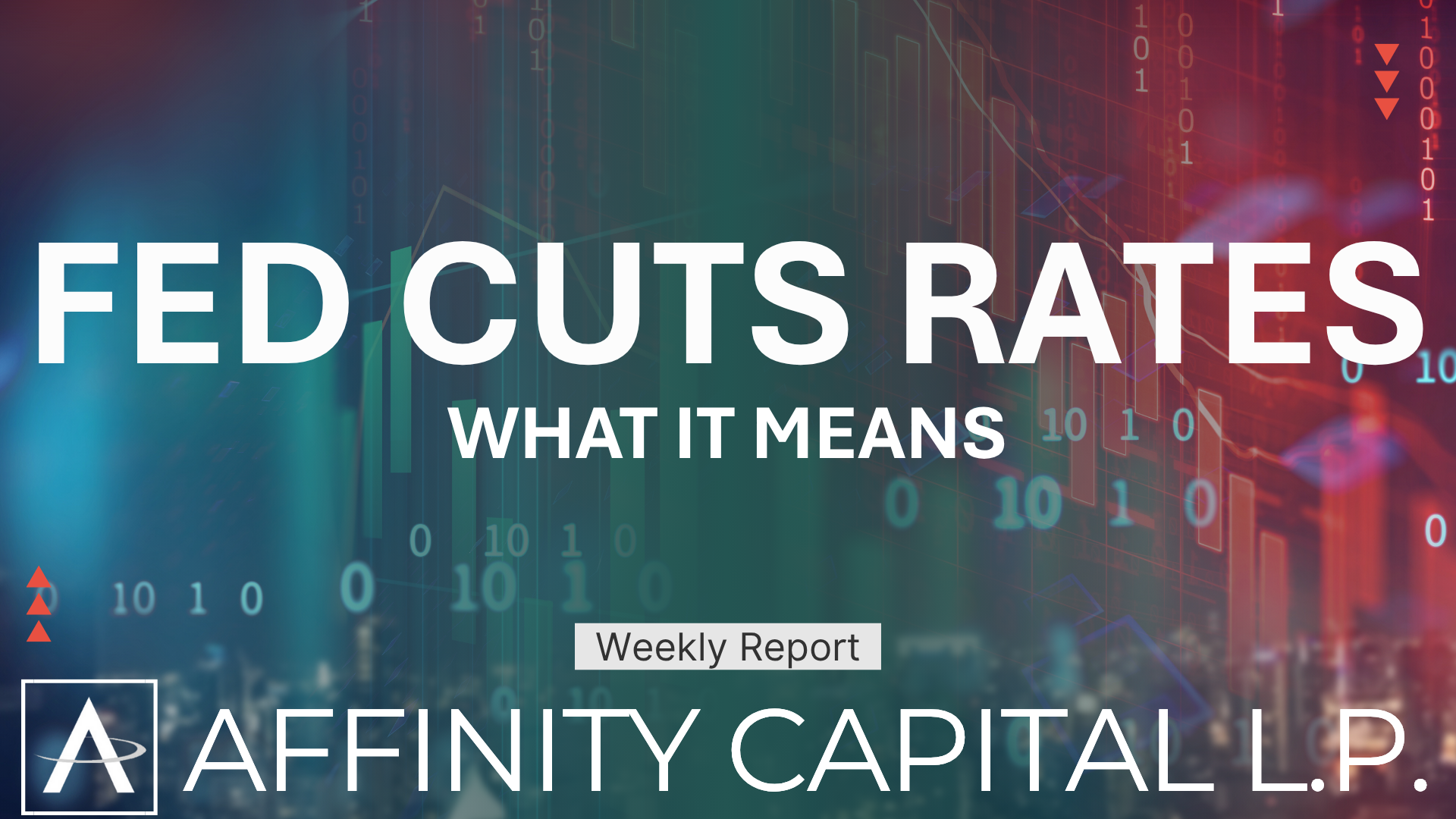Don't Pop the Champagne Just Yet: Why the Stock Market Rally Might Fizz Out in 2024

The rise of the stock market in 2023, fueled by hopes of a soft economic landing and tamed inflation, has investors dreaming of champagne toasts in 2024. But amidst the celebrations, a drumbeat of caution is brewing: can a sunny economic outlook guarantee a cloudless sky for Wall Street? While a continued rally isn't out of the question, several looming factors suggest the party might end sooner than some expect. Affinity Capital has been overly cautious with your hard-earned money in 2023 as the issues we have outlined below have been brewing all year. The majority of gains in 2023 were, for the most part, led by thin leadership in some of the largest stocks. This is not a sign of a healthy market.
1. The Fed's Tap Dance: From Hawk to Dove and Back Again?
The Federal Reserve's pivot away from its aggressive rate hikes was the main oxygen for the 2023 rally. But the dance isn't over yet. While “slowing inflation” might prompt lower rates in 2024, the central bank isn't known for its tango prowess. If inflation proves more stubborn than anticipated, another hawkish turn could send shockwaves through the market, especially in interest-rate sensitive sectors like tech and growth. Keep in mind, a slowing rate of inflation does not mean prices are falling – it means that inflation is still rising but at a slower rate!
2. Earnings: Will the Music Stop?
Corporate earnings, the bedrock of stock prices, have largely held up despite economic headwinds. However, the question is whether they can keep the beat in a slower growth environment. Rising costs and potential wage pressures could squeeze profit margins, putting downward pressure on stock prices even if the economy keeps its head above water. A note about corporate earnings and Wall Street: When
a company “beats” or “misses” their quarterly earnings – It is based on the averages of dozens of analyst forecasts which are constantly updated throughout the quarter and year. The reaction of buyers and sellers to the headline earnings reports may not always indicate the whole story. On average 90% of the 500 stocks in the S&P 500 have BUY ratings. Keep in mind, Wall Street firms are marketing their products and services to these same companies they are analyzing.
3. Geopolitical Jitters: A Wild Card on the Table
The world stage remains a tinderbox, with ongoing conflicts in Ukraine and the Mid-East, tensions simmering on other fronts. A major escalation or economic shockwave emanating from geopolitics could trigger risk aversion and send investors scurrying for safe havens, leaving equities in the dust. This is especially true with Iran and their proxies in Lebanon, Iraq and Yemen.
4. The Debt Dance: A Burden We Can't Ignore
Soaring national debt, both in the US and globally, casts a long shadow over economic stability. With interest rates on the rise, servicing this debt becomes more expensive, potentially diverting resources away from productive investments and impacting corporate and consumer finances. A debt crisis, though unlikely in the immediate future, could be a major spoiler for any sustained market rally. Federal spending jumped from $4.45 trillion in 2019 to $6.21 trillion in 2023, according to the Congressional Budget Office. That is a 40 percent increase in four years. The proposed 2024 national budget is 9.5 percent higher than 2023 with an estimated deficit of $1.84 trillion. We must return to pre-COVID budgets based on actual revenue and curtail spending. The proposed budgets through 2033 show well over a $1.50 trillion deficit each year! The bond markets have been flashing a warning signal for over a year with annualized interest rate returns for U.S. Treasury Bills of less than one month delivering more than those of 30-year Bonds.
5. Valuations: Back to Reality Check?
While not as lofty as during the pandemic frenzy, current valuations still leave some room for concern. A 25% gain in 2023 has baked in optimism about the future, and any missteps on the economic or corporate earnings front could lead to a sharp correction, bringing valuations closer to long-term averages.
So, what does this all mean?
Investing is not a linear journey, and 2024 promises to be anything but predictable. While the recent economic improvements are cause for cautious optimism, investors should keep their champagne on ice for now. A soft landing for the economy doesn't automatically translate to a smooth ride for the stock market. Vigilant monitoring of key factors like the Fed's stance, corporate earnings, and geopolitical risks will be crucial for navigating the year ahead. Remember, staying grounded in fundamentals and embracing a healthy dose of skepticism will serve you well, whether the market celebrates or sulks in 2024.
In conclusion, the stock market rally of 2023 might not be the harbinger of a prolonged bull run. Several potential roadblocks lie ahead, each with the power to disrupt the party. While cautiously optimistic for the economy, investors should approach 2024 with a clear head and a diversified portfolio, ready to weather whatever the market throws their way.
We remain committed to helping you achieve your investment objectives. Please do not hesitate to reach out with any questions or concerns. We welcome your feedback and are always available to visit. Thank you for the opportunity to serve you and your family and to collaborate with you for—Wealth Management for Life!




